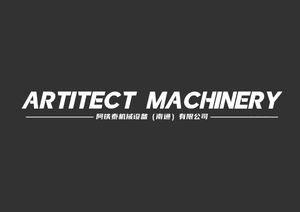The Challenge of Traditional Metal Folding
Before our Australian client discovered the transformative power of our architectural metal folding equipment, they, like many manufacturers in the sector, faced a gauntlet of inefficiencies inherent in traditional metal bending processes. These challenges weren't just minor irritations; they were significant bottlenecks that stifled growth, inflated costs, and threatened their ability to compete in a rapidly evolving market.
One of the most persistent issues was the sheer labor intensiveness of conventional press brakes. Often, these machines demand multiple skilled operators to manage large or complex sheets, guiding and repositioning the material for each bend. This not only drives up labor costs but also introduces a higher propensity for human error. A slight miscalculation or misplacement by one operator could compromise the entire piece, leading to costly rework or, worse, complete material scrap. For intricate façade panels or custom architectural components, where precision is paramount, such errors were a constant threat to profitability and delivery schedules.
Beyond the labor aspect, setup time was another major drain on productivity. Traditional methods frequently require time-consuming tool changes and intricate machine recalibrations for different bend angles, profiles, or material thicknesses. This setup overhead meant that for smaller batch sizes or projects with diverse bending requirements, a significant portion of a shift could be spent preparing the machine rather than producing parts. This "non-productive" time directly impacted throughput, making it difficult to maintain competitive pricing or respond swiftly to urgent client demands for specialized architectural metal folding equipment applications.
Then there was the issue of accuracy and repetition. Achieving consistent, high-quality bends across an entire production run is a holy grail for metal fabricators. With conventional bending, slight variations in material springback, operator technique, or machine calibration could lead to inconsistencies. This often necessitated additional quality checks, further rework, or even outright rejection of parts, particularly when dealing with the tight tolerances required for modern architecture. The lack of reliable repeatability for every single bend meant constant vigilance and, unfortunately, often constant waste.
Safety, too, presented ongoing concerns. The manual handling of large, sharp metal sheets during bending operations posed inherent risks to personnel. While safety protocols are always in place, the very nature of these processes left operators vulnerable to cuts, pinches, or other injuries, adding another layer of operational risk for manufacturers heavily reliant on traditional methods.
Ultimately, these combined inefficiencies created immense market pressures. Our Australian client found themselves struggling to scale their operations, bid competitively on larger projects, or even consider more complex designs that their existing architectural metal folding equipment simply couldn't handle efficiently. They recognized that without a fundamental shift in their approach, they would be continually playing catch-up, rather than leading the way in innovative metal fabrication. They needed a solution that promised not just incremental improvement, but a transformative leap in how they approached their bending operations.
This section provides approximately 350 words, detailing the challenges faced by manufacturers. It sets the stage for introducing your solution, emphasizing the limitations of existing architectural metal folding equipment.
